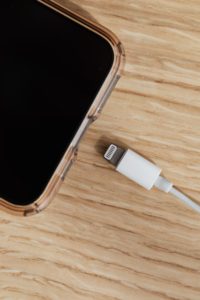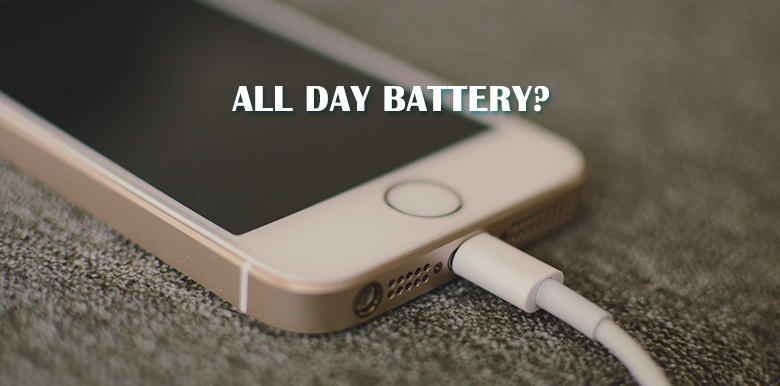These days, we’re on our phones more than ever, which means it’s more important than ever before to keep our batteries fully charged. But it’s not always easy to be within the range of a charger, so conserving battery life can save you from watching your phone die when you need it. Use these tips to keep battery in your phone –

Charged phone
1. Don’t let your battery die
Try to keep batteries charged at an average 50% or above most of the time — at the very least somewhere between 40% and 80% — to preserve an optimal life span. Even though your charger can control electronic input to prevent damage, you should unplug the phone when power hits 100% and, if possible, avoid overnight charging.
2. Airplane Mode is your battery’s friend
Airplane Mode cuts off all radio signals to and from your phone, halting email, messages, phone calls, Wi-Fi, and Bluetooth connections. This may make life uncomfortable for people used to being perpetually connected, but it’s a great help in conserving your battery when you don’t have anywhere to recharge. Swipe down on your Android Quick Settings tile and tap to enable Airplane Mode. On an iPhone, it’s available as a toggle within the Settings. To stop short of such a sweeping disconnect, you can individually disable Bluetooth, Wi-Fi, GPS, and NFC if you are not using them. Note that if you’re also wearing an Apple Watch or an Android-compatible watch, you’ll need Wi-Fi or Bluetooth for some watch features to function properly.
3. Use dark wallpaper
Most people love wallpaper, especially the animated kind — it’s one of the fun parts of having a phone. But that viewing pleasure comes at the expense of your battery. On Android devices with AMOLED displays, black or dark wallpaper conserves battery life because the screen uses energy to illuminate only colored pixels. Black pixels are not lit and require less power to maintain the image. Not to mention, dark wallpapers are easy on the eyes and look absolutely gorgeous. Live wallpapers aren’t fatal, but they tend to use more battery power than static ones, though the effect is variable. Generally, it’s a good idea to go with static wallpaper, for the sake of your battery.
4. Disable location services
Most people don’t want or need their smartphone apps following them around, convenient though it may be if you’re using travel apps or geotagging your photos. Keeping location services on for all your apps is not only intrusive and unnecessary but also affects battery life. Most apps don’t need to track your location in the background, so first choose how each of your installed apps uses location services and disable the option whenever you can. On an iPhone, go to Settings > Privacy > Location services and decide which apps can use location always, only while in use, or never. On an Android phone, you can set individual app permissions by going into Settings > Apps and then selecting an app and toggling on or off Location under Permissions. You can also toggle Android’s location widget from the Quick Settings tile.
5. Ditch the widgets, pause the notifications
Android and iOS widgets are certainly convenient for your everyday life, but they can sap your battery’s resources. Multiple internet-connected widgets – social media, mail, weather – constantly sync and update, draining your battery. To remove unneeded widgets on iOS, swipe left on the home screen to get to the widget pane, then scroll to the bottom and tap the Edit button to add or remove widgets. On Android, tap and hold a widget icon on the home screen and drag any you don’t want into the trash. While you’re at it, switch off push notifications for email updates and nonessential services.
6. Avoid extreme heat or cold
Charging or storing your smartphone in high temperatures can cause extreme damage. Your device is designed to perform well in a wide range of temperatures, with 62 to 72 degrees Fahrenheit as the ideal zone. Do not use your device in temperatures higher than 95 F, because it can permanently damage your battery so that it won’t power your device for as long per charge. When using your device in a very cold environment, you may see a temporary drop in battery life, but once the battery’s temperature climbs back to normal range, performance will improve.
7. Conserve power
Both iOS and Android phones offer a power-saving mode that automatically adjusts your settings to use the least amount of juice needed to operate. Low Power Mode shuts down all nonessential features. For the iPhone, access Settings > Battery > Low Power Mode to toggle it on or off. Android’s power-saving mode is also accessible via the Settings menu — just access Device Care > Battery > Power Mode and select from High Performance, Optimized, Medium Power Saving, or Maximum Power Saving. Sure, this is an emergency measure, but it can spell the difference between a functioning phone and a dead one.
8. Uninstall unnecessary apps
Routinely go through all of your apps and uninstall any that you don’t use. These apps could be using up a small amount of battery throughout the day, which can really add up over time.
Use these tips to keep your phone charged all day. When you do finally find a outlet or charging station, if you place your phone in airplane mode, it tends to charge faster because it’s using fewer antennae and other processes in background.
